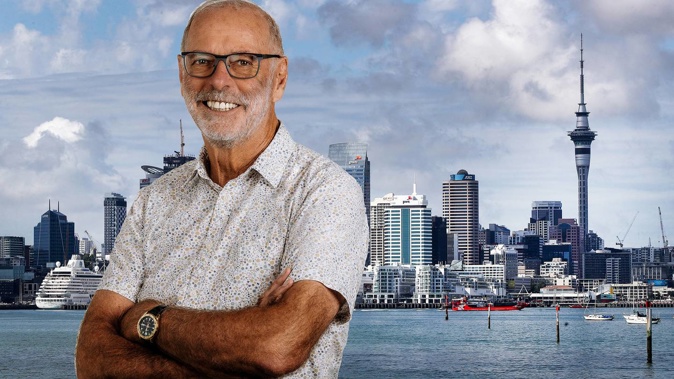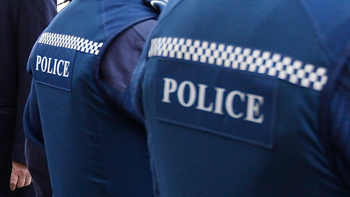
Auckland and the Beehive have agreed on a truce.
Mayor Wayne Brown and Transport Minister Michael Wood have agreed to put down their swords and cooperate on a joined-up transport plan including their respective priorities like shifting Auckland’s port, building light rail, and getting working on an additional Waitematā Harbour crossing.
They sealed the detente with the announcement of a $200 million Crown-funded top-up for the city’s Eastern Busway project, which had been facing cost pressures - money reallocated from the cancellation of the Auckland cycle bridge last year.
Brown and the Government have sparred over their respective commitments, particularly Auckland light rail, which Brown has been fairly critical of, and Brown’s ambition to shift the port, for which the Government has shown muted enthusiasm.
Now, both parties have agreed to work on a linked-up strategy for Auckland, working through their respective priorities. Each side notes they have a mandate to deliver on their promises; Labour’s mandate stems from its strong 2020 majority, and Brown’s from the 2022 local body win.
This does not mean that each side backs what the other side wants. Brown has not become an overnight convert to light rail, for example.
It means that both sides have agreed to quit scrapping and work together about a plan forward for the city.
“The Government and council have committed to work together to advance our priorities, provide certainty and deliver progress for Auckland,” Brown said.
The thinking is that decisions like moving the port will have a large impact on what kind of bridge or tunnel is built over the Waitematā and what kind of heavy rail connections are needed through the rest of the city. Likewise, the light rail project will need to factor in what kind of public transport connection should be included in the new harbour crossing.
“The minister and I agree that it is important for there to be a focus on the immediate and pressing needs facing Auckland including reducing congestion, establishing a clear plan and timeline for the future of Auckland’s publicly owned waterfront land and fixing Auckland’s current public transport crisis,” Brown said.
“Together we will ensure central and local agencies are responding to the wishes of Aucklanders,” he said.
Wood said the Government and the mayor would work “constructively on city-shaping initiatives that we are strongly committed to and have mandates to advance including work on the mass rapid transit system including buses, trains, ferries, the CRL [City Rail Link], Auckland light rail and the alternative Waitematā Harbour crossing”.
“This work will be supported by the Government’s draft New Zealand freight and supply chain strategy to be published by June next year, which will inform investment decisions by central and local government and the private sector,” Wood said.
The supply chain strategy will talk about how coastal shipping, ports, rail hubs and other parts of New Zealand’s infrastructure network will function efficiently to move goods around New Zealand when they arrive here.
This will have an impact on the decision over where to shift the port because the port’s future location will need to be one that makes sense for the companies that use Auckland as a hub to send freight around the county. A major conundrum for the council is that South Auckland is the logistics hub of New Zealand, where many of the goods imported into the country are warehoused before being sent up and down the country.
Brown thanked the Government for backing the busway.
“The Northern Busway is probably Auckland’s most successful transport project of recent years,” Brown said.
“We need to build on its success by finishing the Eastern and get cracking on the Northwestern Busway as soon as possible. Today’s announcement is a good first step,” he said.
Once completed, the Eastern Busway will shave 20 minutes off a trip between Botany Town Centre and Britomart.
During peak periods it will provide a reliable, high-frequency trip into the city.
By 2028, the busway will carry 14,000 passengers per day, more than four times the 3700 bus passengers per day prior to Covid-19. By 2048 it is expected to increase to 24,000 passengers per day.
Brown and Wood said the busway showed a “commitment to deliver better transport outcomes for Auckland, securing New Zealand’s economy and providing the certainty our largest city needs to thrive”.
The pair said this future would include all forms of transport, including cars, buses, trains, ferries, cyclists, pedestrians, freight and passenger rail and light rail.
They said the plan would need to include enhancements to the existing transport system including maximising return from the City Rail Link, when it opens, through heavy rail improvements.
It would also include the Northwestern Busway, Auckland light rail, and the alternative Waitemata Harbour crossing.
The plan would also need “clear decisions” and timelines to be made about the future use of Auckland’s publicly owned waterfront land, currently being used by Ports of Auckland Ltd.
Take your Radio, Podcasts and Music with you









